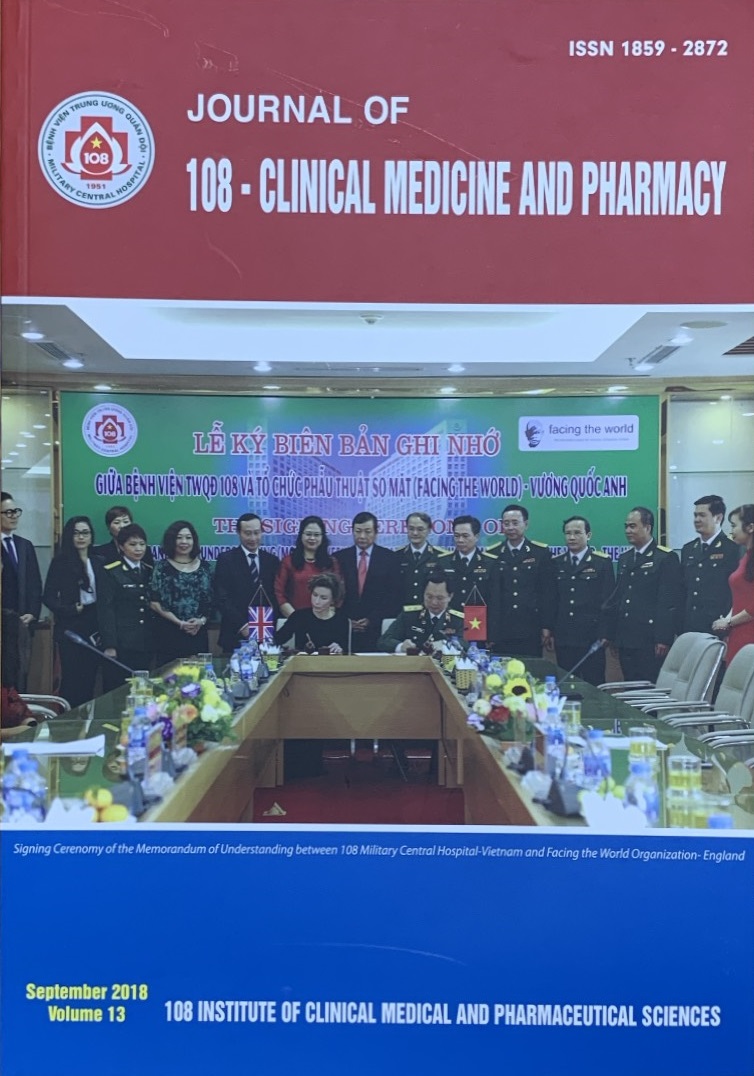The effectiveness of anti-osteoporotic therapy with alendronate in geriatric hip fracture patients
Main Article Content
Keywords
Tóm tắt
Objective: To evaluate the difference of bone mineral density and serum concentration of osteocalcin, CTX in geriatric hip fracture patients after 12 months of anti-osteoporotic therapy with alendronate. Subject and method: 60 patients ≥ 60 years old in 108 Military Central Hospital and 103 Military Hospital, were divided in two groups: 30 hip fracture patients with osteoporosis, treated with alendronate in 12 consecutive months, and 30 non-hip fracture people as control group. Patients were evaluated by bone mineral density (BMD) measurement (DEXA technique, Hologic machine) and concentration of serum osteocalcin, CTX, before and after 12 months of alendronate treatment. Result: After 12 months of alendronate (Fosamax) treatment, the lumbar mean BMD increased (∆) 0.060 ± 0.040 (g/cm2) and there were 30% (9) patients with BMD improvement, p<0.05, the hip mean BMD also increased (∆) 0.080 ± 0.061 (g/cm2) and there were 33.3% (10) patients with BMD improvement, p<0.01. The decreases in serum concentration of osteocalcin, CTX, and patient rates were 1.47 ± 8.13ng/ml, 20% (6 pts) (p>0.05), 0.16 ± 0.2ng/ml, 33.3% (10 patients) (p<0.05), respectively. Conclusion: The geriatric hip fracture patients with osteoporosis had good outcome in term of bone mineral density and CTX serum concentration after 12 month treatment with alendronate.
Keywords: Hip fracture, bone mineral density, osteocalcin, CTX, alendronate.
Article Details
Các tài liệu tham khảo
2. Hoàng Thị Kiều Hoa (2014) Tỷ lệ té ngã và các yếu tố liên quan đến té ngã ở bệnh nhân cao tuổi gãy cổ xương đùi. Tạp chí Nội khoa Việt Nam, số đặc biệt, tr. 152-158.
3. Nguyễn Văn Tuấn, Nguyễn Đình Nguyên (2007) Nguyên nhân và yếu tố nguy cơ. Loãng xương: Nguyên nhân, chẩn đoán, điều trị, phòng ngừa, chương I, tr. 13-32.
4. Dennis MB et al (1996) Randomised trial of effect of alendronate on risk fracture in women with existing vertebral fractures. Fractures Intervention Trial Research Group. The Lancet 348: 1535-1541.
5. Gonnelli S et al (1999) Bone turnover and response to alendronate treatment in postmenopausal osteoporosis. Calcif Tissue Int 65: 359-364.
6. Lieberman M (2009) The extracellular matrix and connective tissue. Marks' Basic medical biochemistry: 936-952.
7. Ravn P et al (1999) Monitoring of alendronate treatment and prediction of effect on bone mass by biochemical markers in the early postmenopausal intervention cohort study. The Journal of Clinical Endocrinology & Metabolism 84(7): 2363-2368.
8. Reid IR, Brown JP, Burckhardt P et al (2002) Intravenous zolendronic acid in postmenopausal women with low bone mineral density. N Engl J Med 346(9): 653-661.
 ISSN: 1859 - 2872
ISSN: 1859 - 2872
